SUMMARY HIGHLIGHTS
- Lake Biwa is huge and will take several days to explore.
- Otsu City is one of the most convenient places to stay around Lake Biwa.
- Hikone Castle and Enryaku-ji Temple are must-visit attractions.
A few years ago, I opened up Google Maps to look for day trips I could take from Kyoto. Lake Biwa immediately stood out.
According to Google Maps, you can get to the lake in less than half an hour from Kyoto Station. Ideal for a day trip, I thought, until I zoomed out and realized just how big Lake Biwa actually is. The largest freshwater lake in Japan, it covers an area of approximately 672 square km (259 square miles)1. That’s almost as big as Singapore!
You can easily visit Lake Biwa on a day trip from Kyoto, but you’ll only see a small portion of it. Being an obsessive-compulsive traveler, I wanted to do more, so I booked a hotel by the lake to explore as much of it as I could in three days.
What followed were too many hours of train rides and walking that took me to over half a dozen temples, three gardens, two castles, a former merchant town, a floating shrine, a museum in the mountains, and a real-life ninja house.
I managed to see a lot in those three days, but whether it was worth the effort is something I’m still not sure about.
VISIT LAKE BIWA QUICK LINKS
To help you plan your trip to Lake Biwa, we’ve compiled links to top-rated hotels, tours, and other travel-related services here.
HOTELS
Recommended hotels in Otsu, one of the most convenient cities to stay in for travelers looking to explore Lake Biwa.
- Luxury: Hotel Koo Otsuhyakucho
- Midrange: Inase Otsu Machiya Bed and Breakfast
- Budget: Calendar Hotel
EXPERIENCES
- Temple Tour: World Heritage Enryakuji and Monk’s Town Private Tour
- Bike Rental: Rent a Road Bike to Explore Lake Biwa and Beyond
- Sake Tasting: Brewery and Distillery Tour with Sake Tasting
- Food Workshop: Make Miso and Explore Japan’s Fermentation Culture
- Dining Experience: Savor Omi Beef at a Historic Sukiyaki Restaurant
OTHER SERVICES
GUIDE TABLE OF CONTENTS
LAKE BIWA AT A GLANCE
Lake Biwa is the largest freshwater lake in Japan. Located entirely in Shiga Prefecture, it measures approximately 64 km (40 miles) from north to south and covers an area of 672 square km (259 square miles)1. It gets its name from a Japanese string instrument – the biwa – that the lake is said to resemble in shape.
Lake Biwa’s roughly 235 km (146 miles) of shoreline2 is home to well over a dozen cities, towns, and districts. There’s a lot of ground to cover, but thanks to Japan’s excellent public transportation system, getting around is fairly easy.
BEST TIME TO VISIT LAKE BIWA
Lake Biwa is worth visiting year-round, but it depends on what you want to do. Summer is the perfect time for lake activities, while spring and autumn are ideal times to visit for mild weather and seasonal colors.
If you’re lucky, your visit may coincide with a festival. The Lake Biwa Great Fireworks Festival – one of Japan’s biggest fireworks festivals – is held in Otsu, typically around early August.
The Otsu Festival is held on the second weekend of October, while the Nagahama Hikiyama Festival – a UNESCO Intangible Cultural Heritage event – takes place in Nagahama from April 9 to 17 every year.
WHERE TO STAY AROUND LAKE BIWA
With around 235 km (146 miles) of shoreline, there’s no shortage of places to stay around Lake Biwa. Based on what I found to be its most interesting tourist attractions, I think Otsu and Hikone are among the most convenient places to use as a base.
I’ve created the color-coded map below to help you understand where these recommended areas are. Click on the link for a live version of the map. (Please note that marked areas are approximations only)
BLUE – Otsu
ORANGE – Hikone
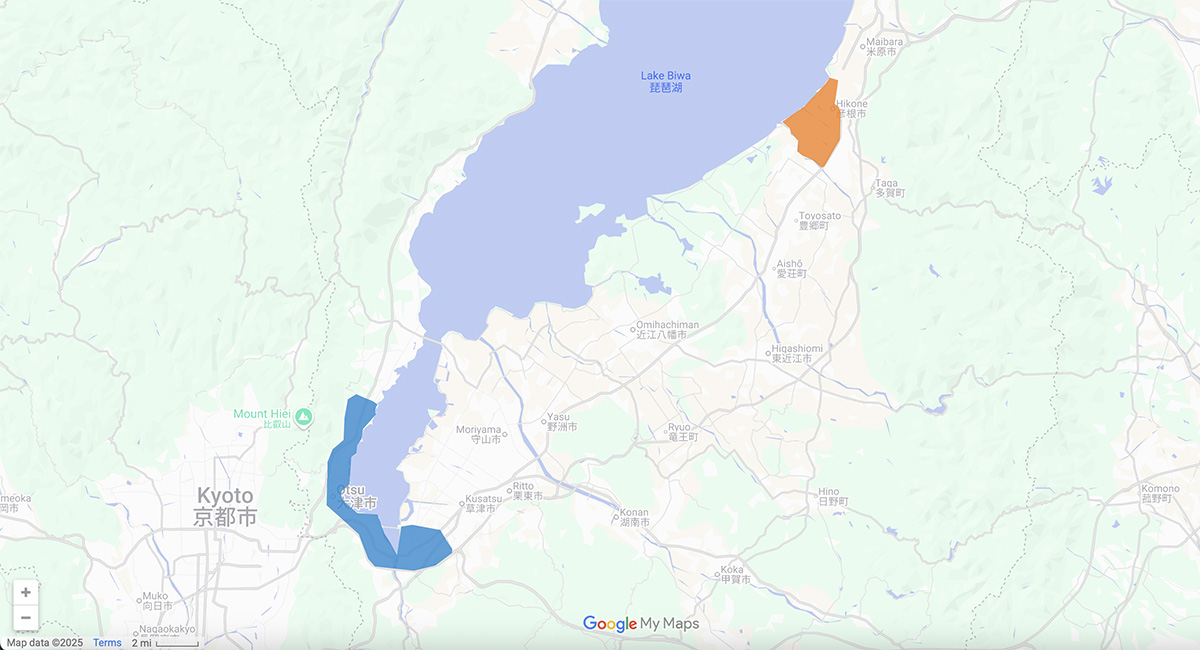
OTSU
Otsu is the capital and largest city in Shiga Prefecture3. Thanks to its proximity to Kyoto, it’s one of the best places to use as a base for exploring Lake Biwa. Otsu Station is just ten minutes away from Kyoto Station.
Otsu is home to a few interesting attractions like Enryaku-ji Temple on Mount Hiei and the Floating Hall of Mangetsu-ji Temple. It also hosts major events like the Lake Biwa Great Fireworks Festival in summer and the Otsu Festival in autumn.
You can check Booking.com for hotel listings in Otsu. Here are some of the top-rated hotels in the area:
- Luxury: Hotel Koo Otsuhyakucho
- Midrange: Inase Otsu Machiya Bed and Breakfast
- Budget: Calendar Hotel
HIKONE
Hikone Castle is one of the most popular attractions around Lake Biwa. If Hikone Castle is one of the main reasons you’re visiting the lake, then staying in Hikone makes sense. It’s smaller than Otsu and has a more relaxed, small-town feel.
You can check Booking.com for hotel listings in Hikone. Here are some of the top-rated hotels in the area:
- Luxury: KAMENOI HOTEL Hikone
- Midrange: Honmachi Juku
- Budget: Toyoko Inn Hikone eki Higashi guchi
THINGS TO DO AROUND LAKE BIWA
Visit One of Japan’s Original Castles
Visiting Japanese castles is always a highlight for me, especially when it’s one of the country’s twelve remaining original castles. The castle keep at Hikone Castle has never been reconstructed due to damage from war, fire, or any natural disasters like floods or earthquakes.
Compared to grander castles like Matsumotojo or Himejijo, Hikonejo’s castle keep is relatively small and unimpressive. However, its unique design and historical value have earned it a rare distinction. It’s one of just five castles that have been designated National Treasures, the highest designation for cultural properties in Japan.
Hikone Castle sits on top of a hill, giving you sweeping views of Lake Biwa. The many cherry trees were just starting to bloom during my visit, so I can imagine how beautiful the grounds must be at the height of sakura season.
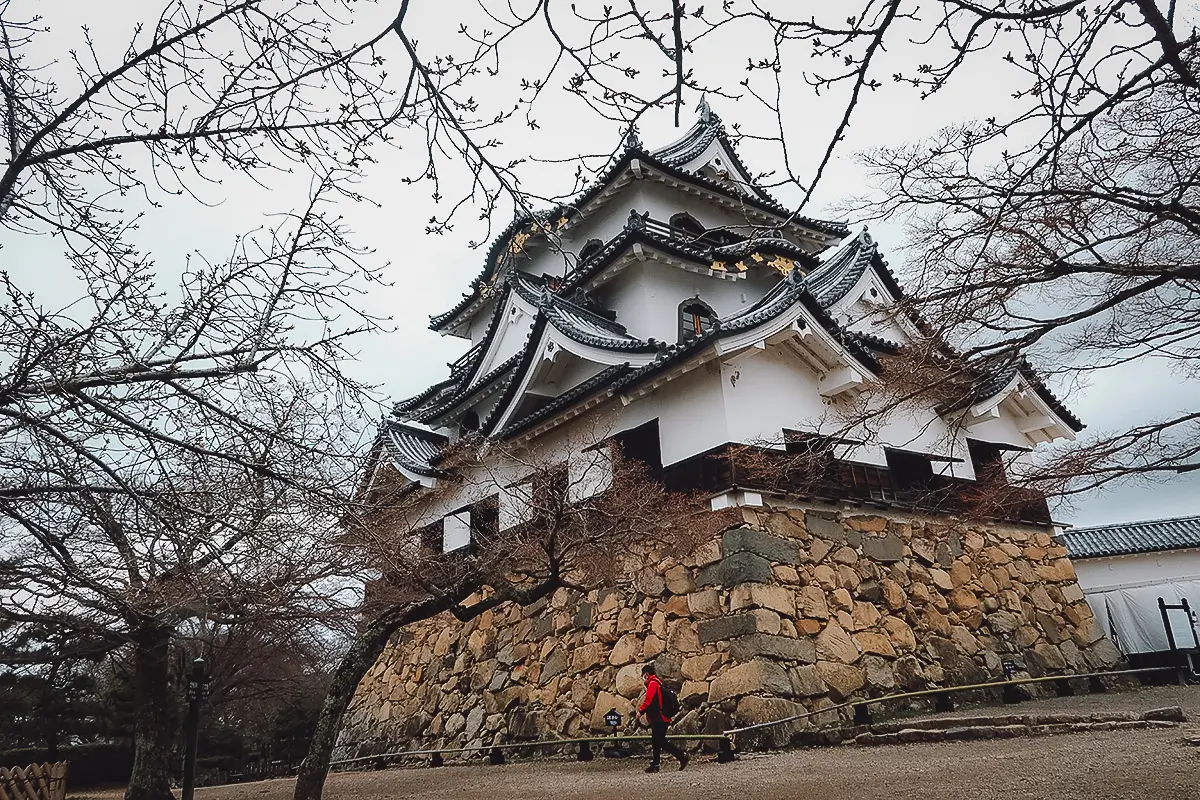
After climbing to the top of the castle keep, you may want to visit the Hikone Castle Museum before proceeding to Genkyuen Garden (pictured below). Combined admission tickets are available, giving you access to the castle and garden, or to all three sites – the castle, garden, and museum.
I skipped the museum and went straight to the garden. Situated at the base of the castle, Genkyuen is a lovely Japanese garden offering postcard-worthy views of the keep rising in the background. It’s a great place to sit and relax with a bowl of matcha and wagashi.
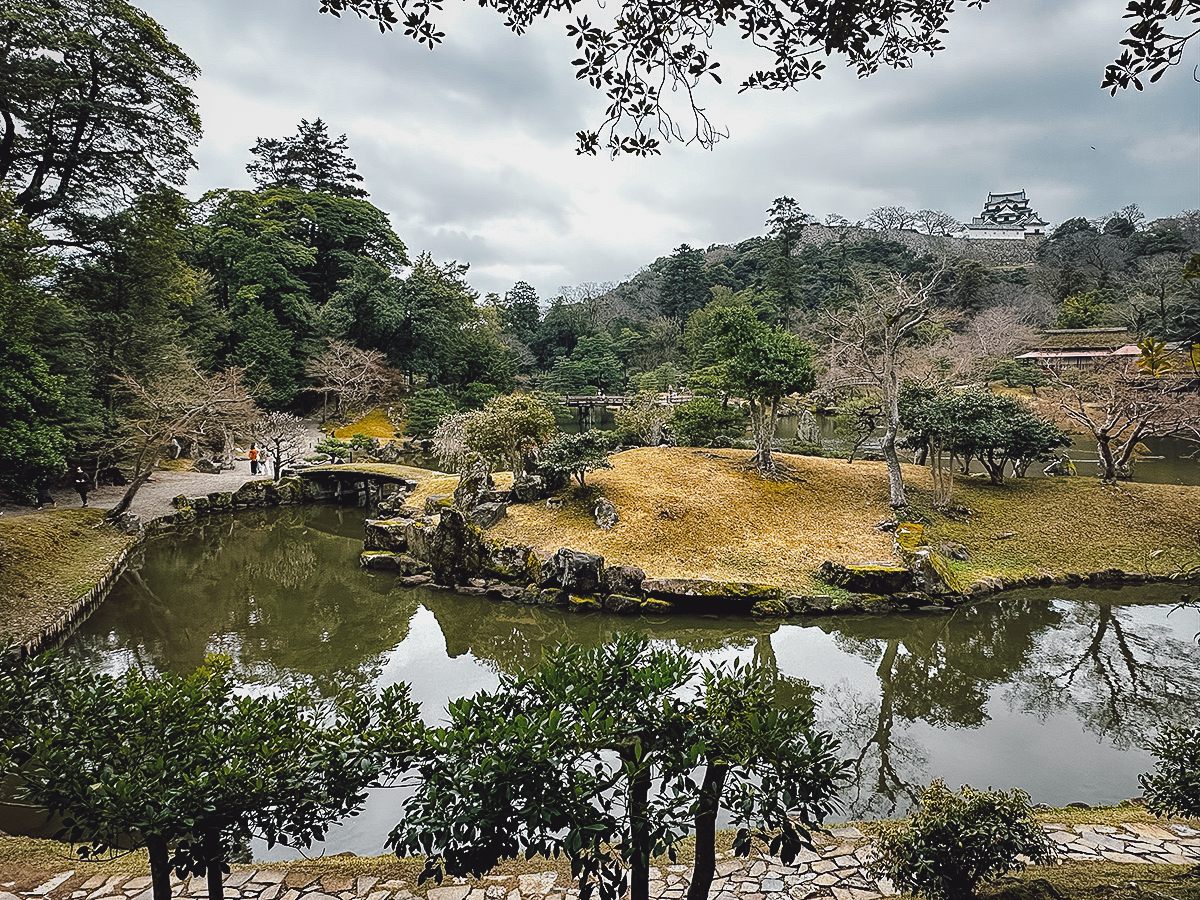
Visit a Temple
Travel anywhere in Japan and there’s one thing you can be sure of – you’ll never be too far away from a temple.
There are dozens, if not hundreds, of temples around Lake Biwa. Some of the most interesting include Enryaku-ji (more on this temple later), Mangetsu-ji, Onjo-ji, Omi Jingu (pictured below), Chomei-ji, and Hogon-ji.
Hogon-ji Temple, one of the Three Great Shrines of Benzaiten, sits on a small island in the northern part of the lake. I tried to go but I missed the last ferry by literally two minutes. Bummer.
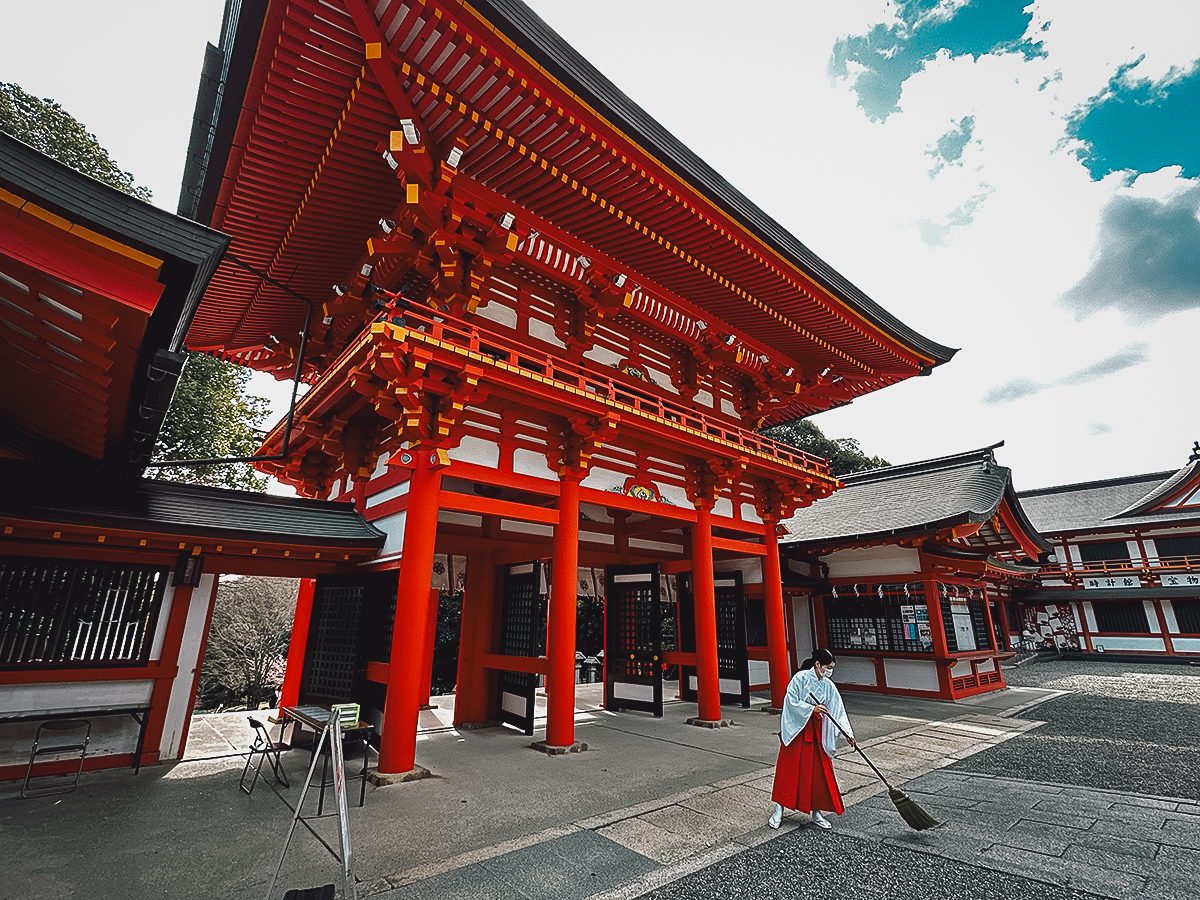
What you’re looking at below is the picturesque Ukimi-do of Mangetsu-ji Temple. Supported by stilts above the water, this small floating hall juts out from the shore and is one of the more unique temple structures you’ll find around Lake Biwa.

Enjoy Bird’s Eye Views of the Lake
Sitting on top of Mount Hiei, Enryaku-ji Temple deserves special mention. A UNESCO World Heritage Site, it’s a sprawling temple complex offering spectacular bird’s eye views of Lake Biwa.
Enryaku-ji consists of multiple temples scattered across the mountain. Surrounded by a forest of red pine and towering cedar trees, it’s one of the most atmospheric temple complexes I’ve visited thus far in Japan.
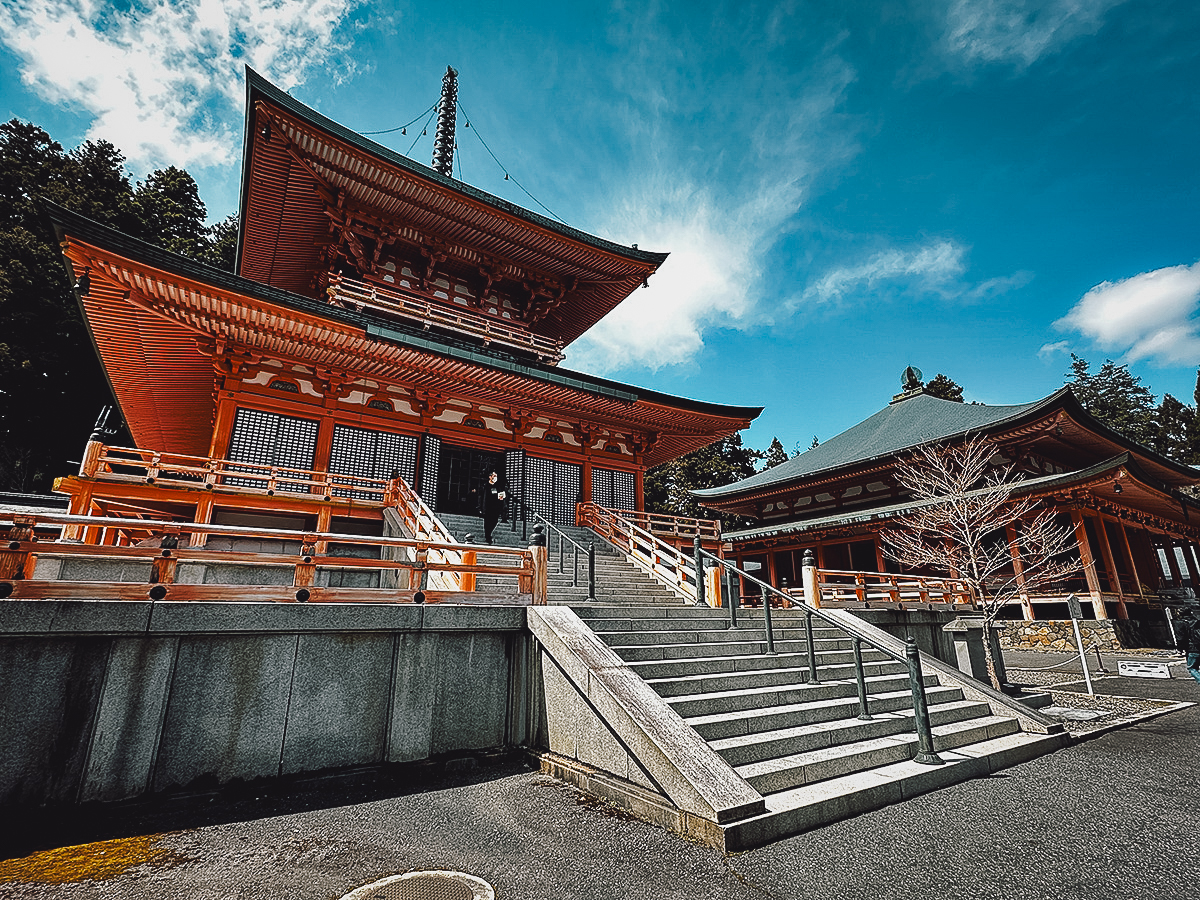
This was taken shortly after exiting the cable car station at the top of the mountain. Breathtaking, isn’t it?
Personally, I found the views of Lake Biwa disappointing, except for this one.
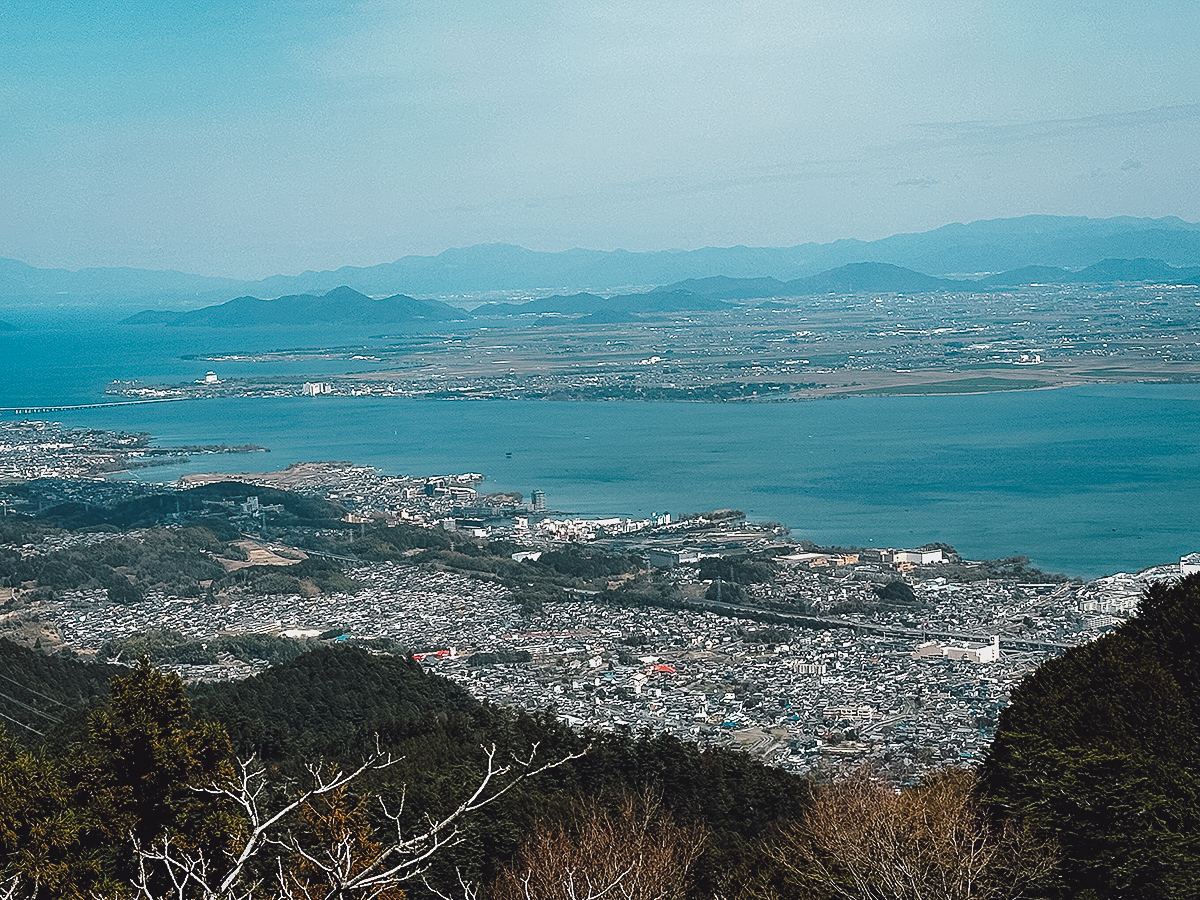
Explore a Well-Preserved Merchant Town
Getting lost in these well-preserved towns – like Hida Takayama in Gifu or Nagamachi District in Kanazawa – is one of my favorite things to do in Japan. There’s something deeply calming about wandering their streets, where every turn feels like a step back into another era.
Omi Hachiman, a beautifully preserved merchant town on Lake Biwa’s eastern shore, was once a thriving hub for affluent local merchants. Today, it’s known for its well-preserved old town and canal, where visitors can take boat cruises and enjoy the city’s traditional townscape.
Beyond canal cruises, you can also visit a few museums around town or take the ropeway up Mount Hachiman for sweeping views of Omi Hachiman and Lake Biwa. The town also comes alive every two years with the Biwako Biennale, a contemporary art festival that transforms its historic spaces into creative venues.
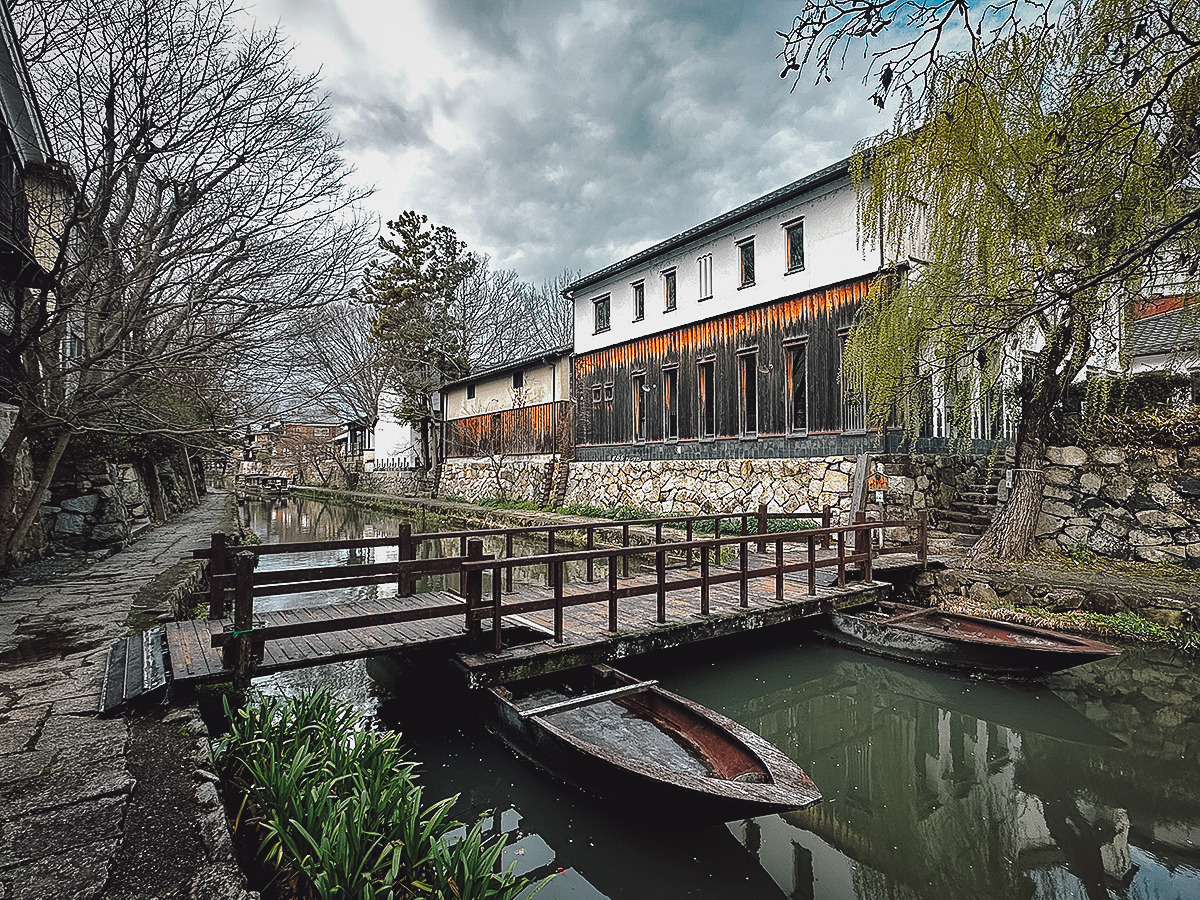
Explore Lake Biwa on a Bicycle
If you’re only visiting Lake Biwa for the day, then renting a bike is one of the most fun ways of exploring Lake Biwa.
The Biwaichi Cycling Course is a 193-200 km (120-124 miles) long National Cycling Route4 that takes you around the perimeter of the lake. Consisting of two routes – a 150 km northern route and a 50 km southern route – you can do as much or as little of it as you like, but fit riders can do the full course in a day.
If this experience appeals to you, then you can rent bikes from Road Bike Rental Japan in Otsu.
Don’t Waste Your Time at Shirahige Shrine
Shirahige Shrine was the one Lake Biwa attraction I was most excited to visit. It looked beautiful in pictures, like Shiga’s answer to the floating torii gate at Itsukushima Shrine in Hiroshima. It was anything but that.
What I found was a smaller and underwhelming counterpart floating just a few meters off the shore along a busy stretch of highway. At the time of my visit, you weren’t even allowed to cross the road to get an unobstructed view of the torii gate. The best view you can get is from the top of a short platform on the other side of the highway.
To make things worse, the closest station is almost 3 km (1.9 miles) away, so you’ll need to walk for over half an hour, mostly along an extremely busy highway, to get to the shrine. Unless you have a car, I don’t think it’s worth the effort.
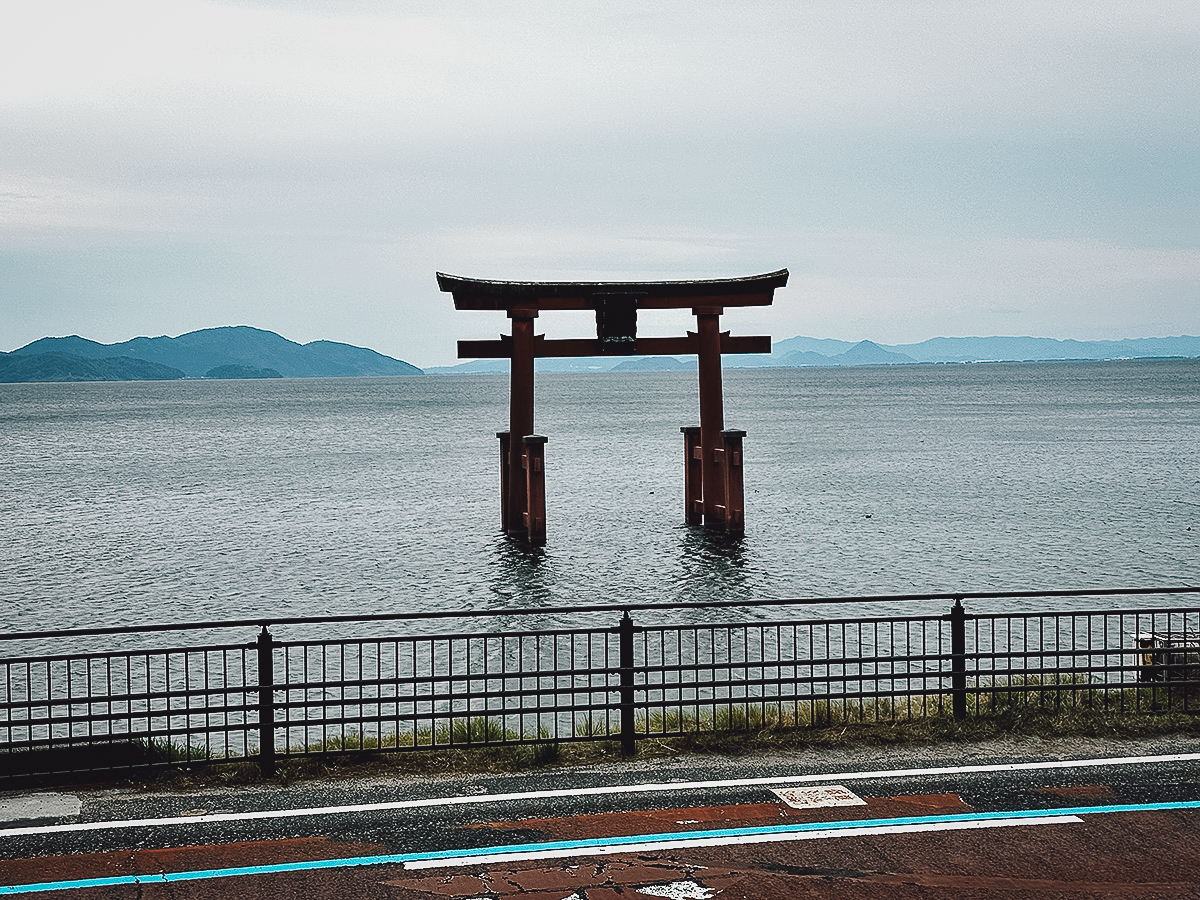
DAY TRIPS FROM LAKE BIWA
Miho Museum
Tucked away in the mountains of Shiga Prefecture, the Miho Museum is an architectural gem designed by I.M. Pei, the same architect behind the Louvre’s Pyramid. It’s an art and antiquities museum that can be reached in under two hours from Otsu Station.
The museum’s collection spans both Eastern and Western antiquities, including treasures from ancient Egypt, Greece, Rome, China, and Japan. I’m not as interested in antiquities so I found the exhibits a little underwhelming. For me, the real highlight is the museum itself.
It takes a combination of train, bus, and a half-hour walk (or shuttle ride) through a gleaming tunnel to get there. It isn’t the easiest museum to visit, but its dramatic design and remote mountaintop setting make it worthy of a day trip.
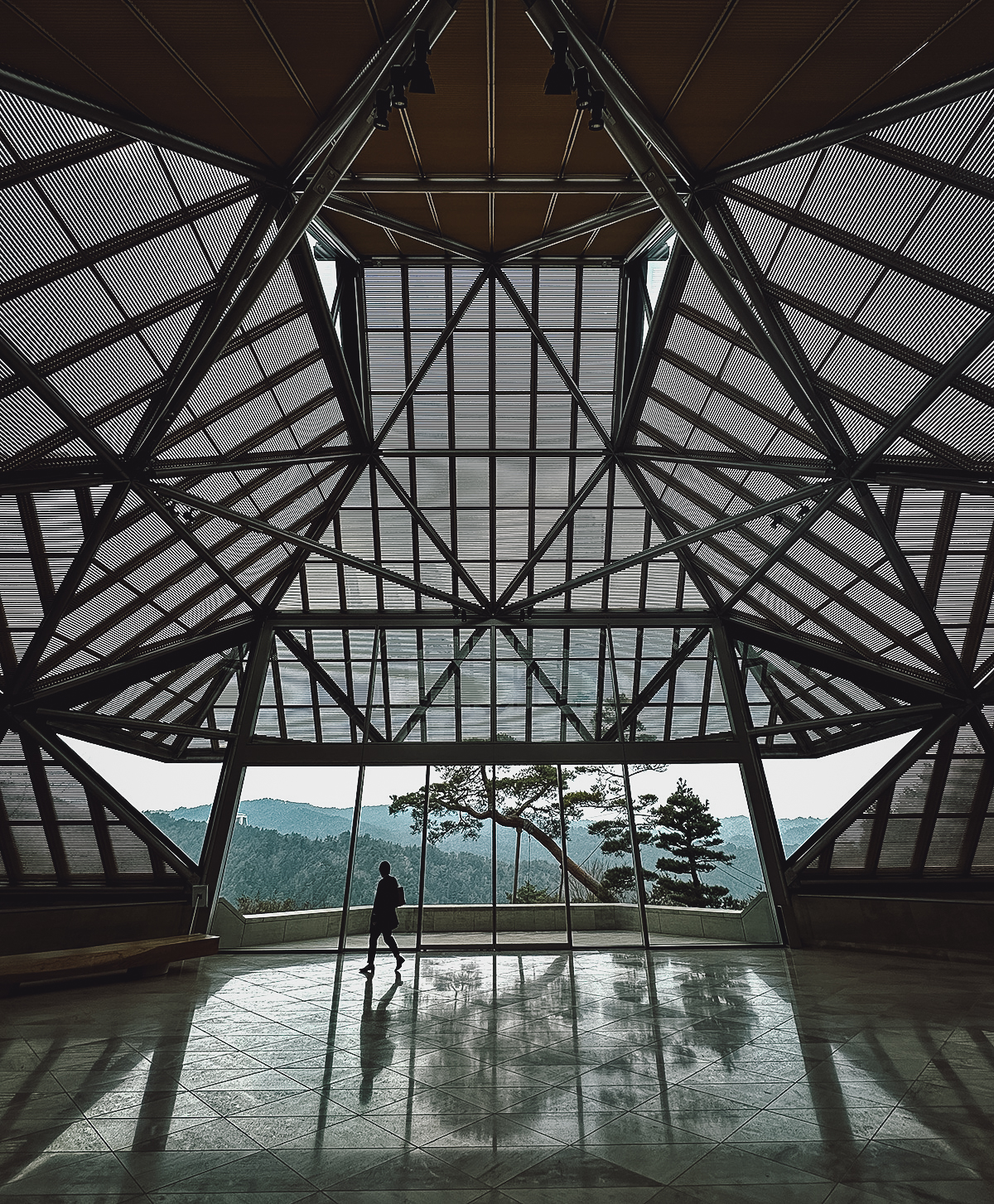
Koka Ninja House
If you’re ever had a fascination for ninjas, then you’ll probably want to take a day trip to this ninja house in Koka. Together with Iga Ueno, Koka is considered the capital of ninja culture in Japan.
Located a little over an hour away from Otsu Station, Koka Ninja House is the former residence of the Mochizuki family, one of the leading clans of the Koga-ryu school of ninjutsu. It’s over 300 years old and is the only authentic ninja house still standing in Japan today.
Being a former ninja residence, the house features trapdoors, secret passageways, and hidden escape routes. Visitors can explore parts of the house on their own, and for an extra fee, they can even try throwing real ninja stars at a throwing range.
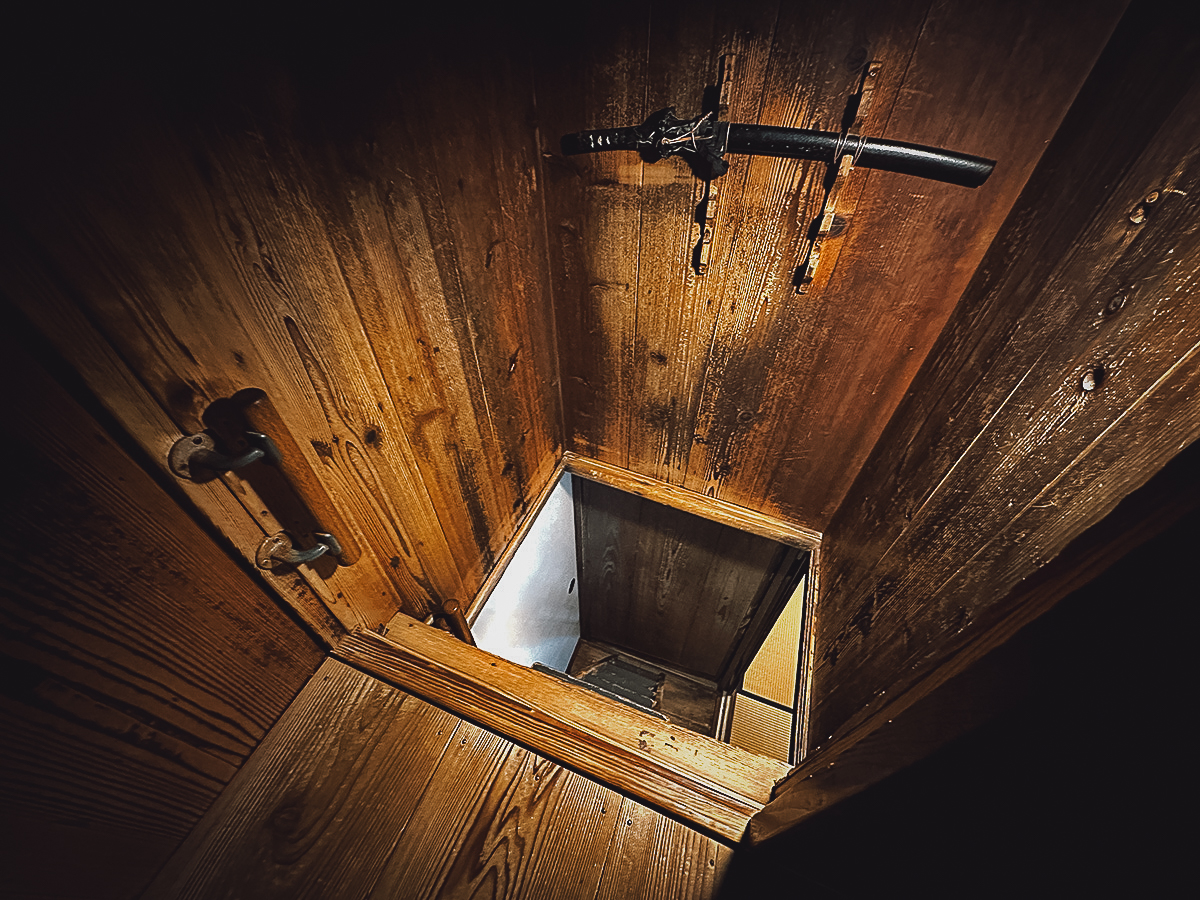
VISIT LAKE BIWA FAQs
Can I visit Lake Biwa on a day trip from Kyoto?
Yes you can, but traveling around the lake takes time. If all you have is one day, then it may be best to focus on just one side of the lake.
Generally speaking, the eastern shore is home to historical sites like Hikone Castle and Omi Hachiman, while the western shore is best for temples and other spiritual attractions.
Is it easy to get around Lake Biwa?
Yes, Shiga’s extensive public transportation system can take you around the entire perimeter of the lake. But as advised, travel times can be long.
Is Lake Biwa worth visiting?
Yes and no. If I could do it all over again, I wouldn’t waste my time trying to visit every major attraction around Lake Biwa. It’s exhausting, potentially expensive, and often not worth the effort.
Having said that, some attractions are definitely worth visiting, like Hikone Castle and Enryaku-ji. On a clear, sunny day, doing the Biwaichi Cycling Course would be a great way to experience the lake as well.
THE FINAL SAY
Lake Biwa wasn’t what I expected. The lake itself isn’t as scenic as I imagined, and it often took me way too long to get from one point to the next. What seems like short distances turned into lots of walking, rushing, and too much time spent in transit. I enjoy walking and commuting, but only when it’s worth it.
One day may not be enough time to fully explore Lake Biwa, but it may be all you need. Just focus on one or two major attractions – like Hikone Castle and/or Enryaku-ji – and that’ll be enough.
Disclosure
This Lake Biwa travel guide contains affiliate links, meaning we’ll earn a small commission if you make a booking at no additional cost to you. We only recommend products and services that we use ourselves and firmly believe in. We really appreciate your support as it helps us make more of these free travel guides. Arigato gozaimasu!
References
1. Lake Biwa. Britannica. (1998, July 20).
2. Lake Biwa. Travel Japan – The Official Japan Guide.
3. Shiga Prefecture. Wikipedia. (2003, February 6).
4. Biwaichi. Travel Japan – The Official Japan Guide.
